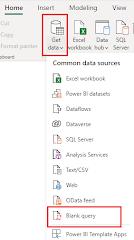Power BI Interview Questions & Answers for Freshers
Power BI Interview Questions & Answers for Freshers
1) What is Power BI?
Answer: Power BI is a business analytics service by Microsoft that provides interactive visualizations and business intelligence capabilities with an interface simple enough for end-users to create their own reports and dashboards.
2) Explain the components of Power BI.
Answer: Power BI consists of three main components: Power BI Desktop (for creating reports and dashboards), Power BI Service (for sharing and collaborating on reports in the cloud), and Power BI Mobile (for accessing reports on mobile devices).
3) What is Power Query?
Answer: Power Query is a data connection technology that enables you to discover, connect, combine, and refine data across a wide variety of sources.
4) Explain DAX in Power BI.
Answer: DAX (Data Analysis Expressions) is a formula language used in Power BI for creating custom calculations in tables and columns. It is similar to Excel formulas but is designed for use in Power BI.
5) Differentiate between calculated columns and measures in Power BI.
Answer: Calculated columns are calculated at the row level and stored in the data model, while measures are calculations performed at the aggregate level for reporting purposes and are not stored in the model.
6) What is a Power BI Gateway?
Answer: Power BI Gateway is a tool that facilitates the connection between Power BI services and on-premises data sources. It allows for scheduled data refreshes and live connections to on-premises data.
7) How can you share a Power BI report with others?
Answer: Power BI reports can be shared through the Power BI service. You can publish the report to the Power BI service and share it with others by granting them access. Additionally, you can create a dashboard to showcase key visuals and share the dashboard.
8) What is the difference between a report and a dashboard in Power BI?
Answer: A report in Power BI is a collection of visualizations and datasets, while a dashboard is a single-page canvas that contains visuals (charts, tables, etc.) from one or more reports, providing a consolidated view of the data.
9) Explain the concept of data modeling in Power BI.
Answer: Data modeling in Power BI involves defining relationships between different tables in the data model, creating calculated columns and measures, and optimizing the structure of the data for analysis and reporting.
10) How can you import data into Power BI?
Answer: Data can be imported into Power BI using various sources such as Excel, databases, online services, and more. Power BI provides connectors for these sources, and you can use Power Query to transform and shape the data during the import process.
11) What is the difference between Power BI Desktop and Power BI Service?
Answer: Power BI Desktop is a standalone application used for creating reports and dashboards, while Power BI Service is a cloud-based platform for publishing, sharing, and collaborating on Power BI reports.
12) Explain the concept of data cleansing in Power BI.
Answer: Data cleansing in Power BI involves the process of identifying and correcting errors or inconsistencies in the dataset. Power Query provides tools for cleaning and transforming data, including removing duplicates, handling missing values, and formatting data types.
13) What is a slicer in Power BI?
Answer: A slicer in Power BI is a visual filter that allows users to interactively filter data in a report or dashboard. It provides a way to slice and dice the data, making it easier to focus on specific subsets of information.
14) How can you create a relationship between tables in Power BI?
Answer: Relationships between tables in Power BI are established by connecting fields with common values. In Power BI Desktop, you can go to the "Model" view, drag a field from one table to a related field in another table, and define the relationship type (single or both).
15) What is the purpose of the Power BI Q&A feature?
Answer: Power BI Q&A (Question and Answer) is a natural language processing feature that allows users to ask questions about their data in plain language. It helps in exploring and analyzing data without the need to create complex queries manually.
16) Explain the concept of row-level security in Power BI.
Answer: Row-level security in Power BI allows you to restrict data access at the row level based on user roles. This ensures that users can only see the data that is relevant to their role, enhancing security and privacy.
17) How can you schedule data refresh in Power BI Service?
Answer: To schedule data refresh in Power BI Service, you need to have a gateway set up for on-premises data sources. After publishing your report to the Power BI Service, you can configure scheduled refresh settings for datasets, specifying the frequency and credentials for data retrieval.
18) What is the purpose of the Power BI Marketplace?
Answer: The Power BI Marketplace, also known as AppSource, is a platform where you can find and share Power BI solutions, apps, and content packs. It allows users to discover and use pre-built templates, visuals, and connectors to enhance their Power BI experience.
19) Explain the difference between calculated columns and calculated tables in Power BI.
Answer: Calculated columns are added to existing tables and compute a value for each row, while calculated tables are new tables created with DAX expressions that define the table structure and values.
20) How can you use Power BI for real-time data analysis?
Answer: Power BI supports real-time data analysis through features like streaming datasets and direct query. Streaming datasets allow you to visualize and analyze data as it's generated, while direct query enables live connections to data sources without importing the data into Power BI.
Feel free to ask any questions about Power BI. I am here to help you.
Happy Learning! 😊

Comments
Post a Comment